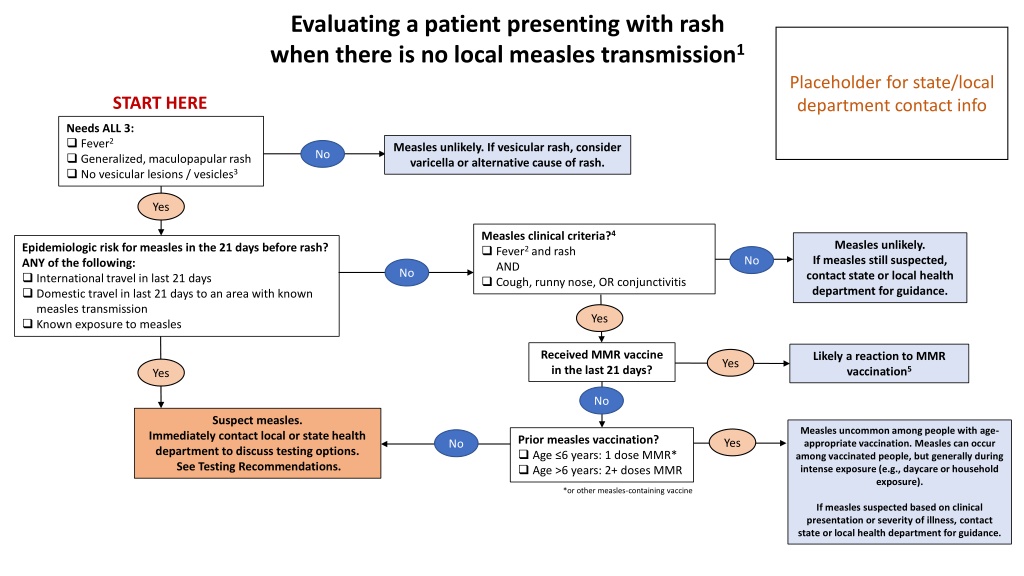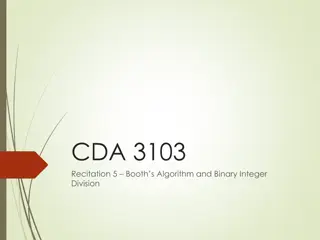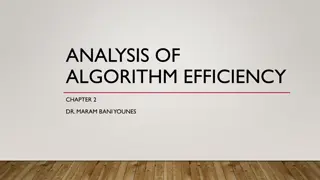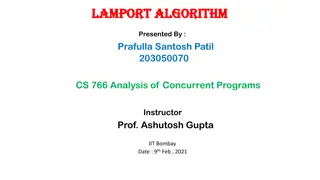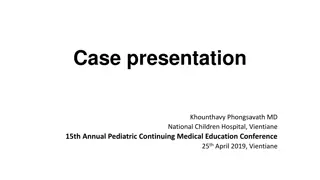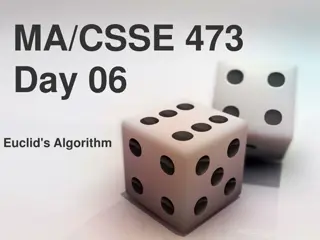Clinical Algorithm for Rash Evaluation
The clinical algorithm outlines the evaluation process for a patient presenting with a rash, focusing on the assessment for measles transmission. It covers key criteria, testing recommendations, and guidelines for suspected measles cases. Healthcare providers can utilize this algorithm to determine the appropriate steps for assessing and managing patients with rash symptoms.
Download Presentation

Please find below an Image/Link to download the presentation.
The content on the website is provided AS IS for your information and personal use only. It may not be sold, licensed, or shared on other websites without obtaining consent from the author.If you encounter any issues during the download, it is possible that the publisher has removed the file from their server.
You are allowed to download the files provided on this website for personal or commercial use, subject to the condition that they are used lawfully. All files are the property of their respective owners.
The content on the website is provided AS IS for your information and personal use only. It may not be sold, licensed, or shared on other websites without obtaining consent from the author.
E N D
Presentation Transcript
Evaluating a patient presenting with rash when there is no local measles transmission1 Placeholder for state/local department contact info START HERE Needs ALL 3: Fever2 Generalized, maculopapular rash No vesicular lesions / vesicles3 Measles unlikely. If vesicular rash, consider varicella or alternative cause of rash. No Yes Measles clinical criteria?4 Fever2 and rash AND Cough, runny nose, OR conjunctivitis Measles unlikely. If measles still suspected, contact state or local health department for guidance. Epidemiologic risk for measles in the 21 days before rash? ANY of the following: International travel in last 21 days Domestic travel in last 21 days to an area with known measles transmission Known exposure to measles No No Yes Received MMR vaccine in the last 21 days? Likely a reaction to MMR vaccination5 Yes Yes No Suspect measles. Measles uncommon among people with age- appropriate vaccination. Measles can occur among vaccinated people, but generally during intense exposure (e.g., daycare or household exposure). Immediately contact local or state health department to discuss testing options. See Testing Recommendations. Prior measles vaccination? Age 6 years: 1 dose MMR* Age >6 years: 2+ doses MMR Yes No *or other measles-containing vaccine If measles suspected based on clinical presentation or severity of illness, contact state or local health department for guidance.
Notes 1. This testing algorithm is intended to be used by bedside providers in settings where there is not local measles transmission. This assumes that the pre-test probability for most people without known epidemiologic risk for measles and who do not meet case criteria will be low. In settings with active measles transmission, the threshold at which to pursue testing may be lower, and a more permissive algorithm could be considered. Either a measured or patient/family-reported fever is adequate; fever may not be measured at the time of healthcare evaluation due to normal fluctuation or to use of anitpyretics (e.g., ibuprofen). A vesicular rash is not consistent with measles, and should prompt consideration for other causes of rash (e.g., varicella/chickenpox) Measles clinical criteria (per CSTE* case definition) include ALL of the following: Generalized maculopapular rash Fever Cough, coryza (runny nose), or conjunctivitis (also known as the 3 C s ) Up to 5% of MMR recipients will get a short-lived, mild febrile rash. This is more common with the first dose of MMR. People who experience this vaccine reaction are not contagious to others around them. If a person has received MMR within 21 days before rash onset, but also has epidemiologic risk for measles, then specialized testing may be required and should be discussed with local or state public health authorities. 2. 3. 4. 5. *CSTE: Council of State and Territorial Epidemiologists: https://ndc.services.cdc.gov/case-definitions/measles-2013/
Testing Recommendations Immediately contact the state or local health department to report a suspect measles case and arrange testing Collect a nasopharyngeal (NP) or oropharyngeal/throat (OP) swab for measles* RT-PCR Follow state/local guidance for specimen collection (e.g., type of swab, media). If directed by public health authorities, urine can also be obtained for measles PCR. At least 50cc of urine should be voided into a sterile container and stored refrigerated (not frozen). Obtain serum for measles* IgM and IgG *Measles virus is also referred to as rubeola in some lab orders, not to be confused with rubella virus
Measles Characteristics Classic symptoms Fever (up to 105F) + generalized maculopapular rash + one of the 3 C s 3 C s: Cough, coryza (runny nose), conjunctivitis Clues to measles: Prodrome of fever and at least 1 of 3 C s often starts 2 4 days before rash Rash starts on head or face and spreads downwards Fever continues through onset of rash, often peaking around the time when the rash starts Measles is rare in vaccinated people, especially with 2 prior doses of MMR 1 dose generally provides 93% protection, and 2 doses provides 97% protection from measles infection
Other common causes of febrile rash in children Parvovirus B-19 ( Fifth Disease ) Classic slapped cheek rash More common in school-aged children than infants Human Herpesvirus 6 (HHV-6, Sixth Disease , Roseola ) Common cause of febrile rash in infants Rash commonly starts on trunk (measles rash starts on face/hairline) Fever often resolves before start of rash (measles fever peaks around time of rash onset) Enteroviruses Common cause of Hand/Foot/Mouth, rash can involve hands/feet which are generally spared in measles Rash can be urticarial, which is not typical for measles Slapped Cheek rash HFM
